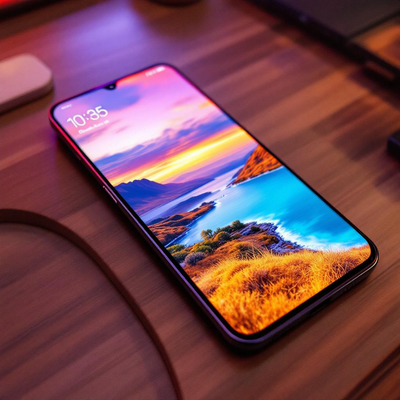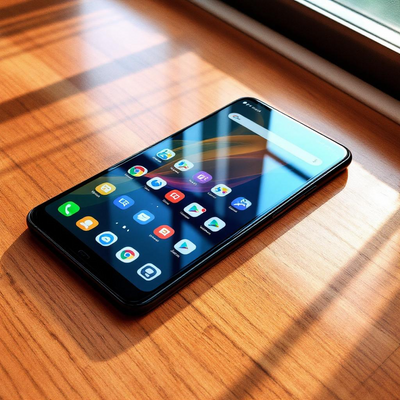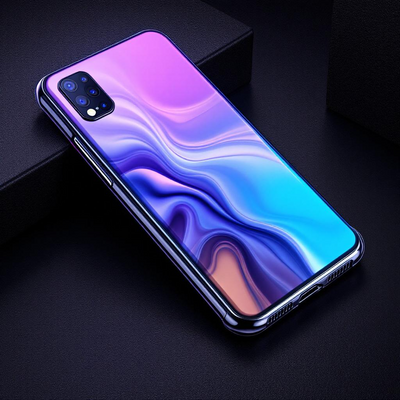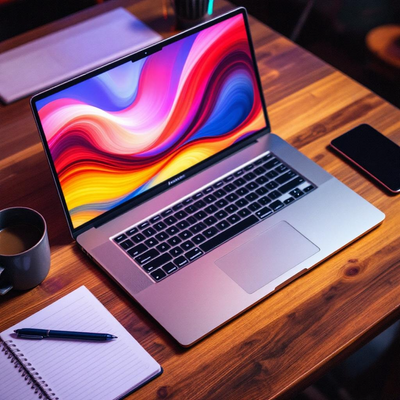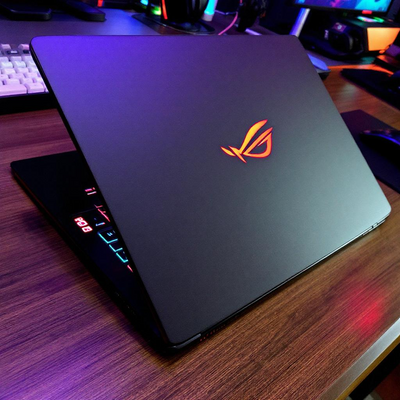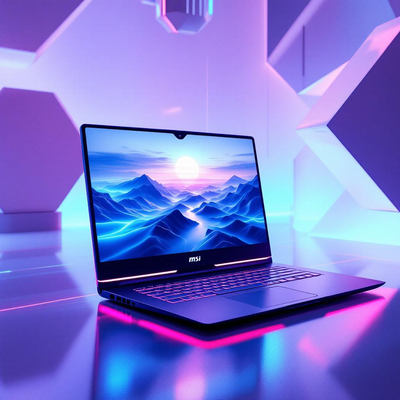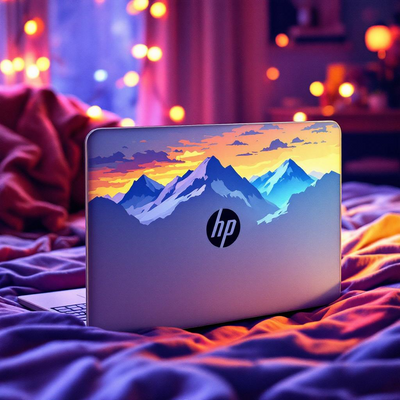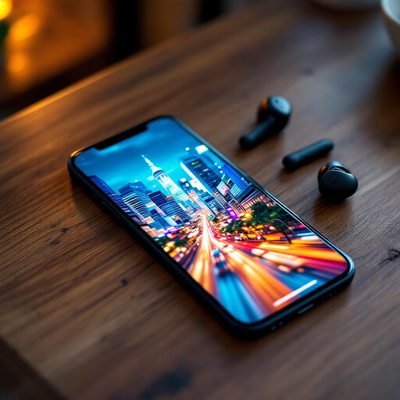Collection - Full Width
- Resolution: 10.20 Megapixels
- Sensor size: APS-C
- Kit Lens: 3.88x zoom 18-70mm
- Viewfinder: Optical / LCD
- ISO: 100 - 3200
- Shutter: 1/4000 - 30 seconds
- Dimensions: 133 x 95 x 71 mm
- Weight: 625 g
- Resolution: 10.20 Megapixels
- Sensor size: APS-C
- Kit Lens: 3.88x zoom 18-70mm
- Viewfinder: Optical / LCD
- ISO: 100 - 3200
- Shutter: 1/4000 - 30 seconds
- Dimensions: 133 x 95 x 71 mm
- Weight: 625 g
- Technology: GSM / CDMA / HSPA / LTE
- Dimensions: 145.9 x 71.9 x 9 mm
- Weight: 161 g
- Display: Super LCD5 5.2 inches
- Resolution: 1440 x 2560
- OS: Android OS, v6.0.1 (Marshmallow)
- Chipset: Snapdragon 820
- CPU: Quad-core
- Internal: 32/64 GB, 4 GB RAM
- Camera: 12 MP, f/1.8 - 5 MP, f/1.8
The HTC 10 is everything an HTC fan has been longing for. A full smartphone package experience without compromise. The problem with this idea is that it doesn't exist, there will always be some phone with a better camera or better battery or a larger display. But we can always look at this idea subjectively and find the right balance between what the phone offers versus compromises you might be making.
It's been quiet in HTC camp lately but it seems the company has been gearing up for its big comeback this year. HTC's relevancy had been slipping away the past couple of years and the Taiwanese company thought it should buckle down and listen to what its customers have been saying for a while. And the fans, on the other hand, are excited to learn that "HTC is back!"
Before the HTC 10, pretty much every iteration of the HTC One series in recent years brought some form of compromise. The HTC One M7 had a great camera, the first of its kind, the problem was only 4MP did not allow any sort of cropping without anyone noticing. The HTC One M8 had the same 4 megapixel camera and HTC made a bad choice to even remove OIS from the flagship.
The HTC One M9 was a step in the right direction, but it was not enough. Even with a bigger camera sensor this time around, the camera performance was still lackluster. The One M9 was also plagued with overheating problems caused by an early version of the Snapdragon 810 which had to be downclocked just to avoid the heating issues. As a result, the HTC's M9 unofficially became the flagship to avoid.
- Technology: GSM / CDMA / HSPA / LTE
- Dimensions: 145.9 x 71.9 x 9 mm
- Weight: 161 g
- Display: Super LCD5 5.2 inches
- Resolution: 1440 x 2560
- OS: Android OS, v6.0.1 (Marshmallow)
- Chipset: Snapdragon 820
- CPU: Quad-core
- Internal: 32/64 GB, 4 GB RAM
- Camera: 12 MP, f/1.8 - 5 MP, f/1.8
The HTC 10 is everything an HTC fan has been longing for. A full smartphone package experience without compromise. The problem with this idea is that it doesn't exist, there will always be some phone with a better camera or better battery or a larger display. But we can always look at this idea subjectively and find the right balance between what the phone offers versus compromises you might be making.
It's been quiet in HTC camp lately but it seems the company has been gearing up for its big comeback this year. HTC's relevancy had been slipping away the past couple of years and the Taiwanese company thought it should buckle down and listen to what its customers have been saying for a while. And the fans, on the other hand, are excited to learn that "HTC is back!"
Before the HTC 10, pretty much every iteration of the HTC One series in recent years brought some form of compromise. The HTC One M7 had a great camera, the first of its kind, the problem was only 4MP did not allow any sort of cropping without anyone noticing. The HTC One M8 had the same 4 megapixel camera and HTC made a bad choice to even remove OIS from the flagship.
The HTC One M9 was a step in the right direction, but it was not enough. Even with a bigger camera sensor this time around, the camera performance was still lackluster. The One M9 was also plagued with overheating problems caused by an early version of the Snapdragon 810 which had to be downclocked just to avoid the heating issues. As a result, the HTC's M9 unofficially became the flagship to avoid.
- Technology: GSM / CDMA / HSPA / LTE
- Dimensions: 149.4 x 73.9 x 7.7 mm
- Weight: 159 g
- Display: IPS LCD 5.3 inches
- Resolution: 1440 x 2560
- OS: Android OS, v6.0.1 (Marshmallow)
- Chipset: Snapdragon 820
- CPU: Quad-core
- Internal: 32 GB, 4 GB RAM
- Camera: Dual 16 MP (29mm, f/1.8) + 8 MP (12mm, f/2.4)
Someone at LG must have thought: "Leather is so last-year, let’s do something nobody has done – or long quit trying." And here we have the LG G5. It has the looks of a brand new flagship, the heart of a dragon and an adventurous dual camera setup suited for every occasion. But there’s more than what meets the eye, the Magic Slot. The LG G5 is a modular smartphone, which lets you plug a handful of external add-ons: a semi-pro camera grip with shutter buttons and a bigger battery, or an external sound amplifier by B&O.
How long since you last saw the inside of your phone? It seems like while everyone was busy experimenting with designs and mixing up various alloys, there was something unusual cooking in the LG labs.
Brand new or just well forgotten old, innovating for its own sake or trying to defy the impossible, the modular design won't let you upgrade the processor or the camera, but it certainly offers plenty of options. The add-ons will mostly be sold separately but initial prices don't seem too bad. You might even get a bonus camera grip - LG will throw one in the bundle in select markets. Who knows, we might see the return of the xenon flash or some smart docking solutions along the lines of Microsoft's Continuum.
What you do get right out of the box is the base equipment and in the case of the G5, it's anything but modest. Perhaps the star of the show is the camera combo. The 16MP camera borrowed from the LG V10 does top-notch stills, and the secondary 8MP sensor offers unmatched super wide shots while adding a hybrid zoom of sorts to the package.
- Technology: GSM / CDMA / HSPA / LTE
- Dimensions: 149.4 x 73.9 x 7.7 mm
- Weight: 159 g
- Display: IPS LCD 5.3 inches
- Resolution: 1440 x 2560
- OS: Android OS, v6.0.1 (Marshmallow)
- Chipset: Snapdragon 820
- CPU: Quad-core
- Internal: 32 GB, 4 GB RAM
- Camera: Dual 16 MP (29mm, f/1.8) + 8 MP (12mm, f/2.4)
Someone at LG must have thought: "Leather is so last-year, let’s do something nobody has done – or long quit trying." And here we have the LG G5. It has the looks of a brand new flagship, the heart of a dragon and an adventurous dual camera setup suited for every occasion. But there’s more than what meets the eye, the Magic Slot. The LG G5 is a modular smartphone, which lets you plug a handful of external add-ons: a semi-pro camera grip with shutter buttons and a bigger battery, or an external sound amplifier by B&O.
How long since you last saw the inside of your phone? It seems like while everyone was busy experimenting with designs and mixing up various alloys, there was something unusual cooking in the LG labs.
Brand new or just well forgotten old, innovating for its own sake or trying to defy the impossible, the modular design won't let you upgrade the processor or the camera, but it certainly offers plenty of options. The add-ons will mostly be sold separately but initial prices don't seem too bad. You might even get a bonus camera grip - LG will throw one in the bundle in select markets. Who knows, we might see the return of the xenon flash or some smart docking solutions along the lines of Microsoft's Continuum.
What you do get right out of the box is the base equipment and in the case of the G5, it's anything but modest. Perhaps the star of the show is the camera combo. The 16MP camera borrowed from the LG V10 does top-notch stills, and the secondary 8MP sensor offers unmatched super wide shots while adding a hybrid zoom of sorts to the package.
- Technology: GSM / HSPA / LTE
- Dimensions: 212.8 x 125.6 x 6.6 mm
- Weight: 298 g
- Display: Super AMOLED 8.4 inches
- Resolution: 1600 x 2560
- OS: Android OS, v4.4.2 (KitKat)
- Chipset: Snapdragon 800
- CPU: Quad-core 2.3 GHz
- Internal: 16/32 GB, 3 GB RAM
- Camera: 8 MP - 2.1 MP
Ever since the 2011 unveiling of the Galaxy Tab 7.7 we've been waiting for the next generation of Super AMOLED tablets. Three years later they have arrived - the Samsung Galaxy Tab S duo comes in 10.5" and 8.4" sizes and like the Tab 7.7 before them, they are stunningly thin.
Separate from the Galaxy Tab and Galaxy Note lines, the Galaxy Tab S tablets still share a lot with them. The powerful hardware platform, combined with proprietary TouchWiz features like Multi Window, instantly put the two at the forefront of functionality. Just look at that specs sheet.
- Technology: GSM / HSPA / LTE
- Dimensions: 212.8 x 125.6 x 6.6 mm
- Weight: 298 g
- Display: Super AMOLED 8.4 inches
- Resolution: 1600 x 2560
- OS: Android OS, v4.4.2 (KitKat)
- Chipset: Snapdragon 800
- CPU: Quad-core 2.3 GHz
- Internal: 16/32 GB, 3 GB RAM
- Camera: 8 MP - 2.1 MP
Ever since the 2011 unveiling of the Galaxy Tab 7.7 we've been waiting for the next generation of Super AMOLED tablets. Three years later they have arrived - the Samsung Galaxy Tab S duo comes in 10.5" and 8.4" sizes and like the Tab 7.7 before them, they are stunningly thin.
Separate from the Galaxy Tab and Galaxy Note lines, the Galaxy Tab S tablets still share a lot with them. The powerful hardware platform, combined with proprietary TouchWiz features like Multi Window, instantly put the two at the forefront of functionality. Just look at that specs sheet.
- Technology: No cellular connectivity
- Dimensions: 49 x 46 x 12.9 mm
- Weight: 63 g
- Display: Super AMOLED 1.3 inches
- OS: Tizen
- Chipset: Exynos 7270
- CPU: Dual-core 1.0 GHz
- Chipset: Exynos 7270
- Internal: 4 GB, 768 MB RAM
- COMMS: Wi-Fi 802.11 b/g/n
The wearable market has been expanding rapidly these last couple of years and things are only looking up. This is not the first time tech has tried to slip onto user's wrists, but this time around it seems both the business and consumer sides are finally ready. Wearables, and smartwatches, in particular, are really starting to mature.
However, there is also another take on this development. One that rings equally true. After a massive boom of new offers and ideas, it appears many major players are now dialing back their efforts and investments in this segment. Some OEMs, like Huawei, have even stated clearly that their current mindset is to wait things out and see where the market goes next.
Of course, there will always be the occasional release, like the Asus ZenWatch 3, but it is a fact that most Google team players, with a history in the wearable niche, like Motorola or LG, appear to be keeping a low profile lately. But thankfully, outside the arguably confining realm of Android Wear, innovation is still booming.
Enter Samsung. Just like Apple, the Korean giant has chosen a more or less proprietary development path for its wearable offers and is working hard to reap the potential benefits of being the different one, the alternative, if you will. There are few other manufacturers with such a rich portfolio of past products in the smartwatch realm, so it is hardly surprising that the Gear S3 stands out amid a growing crowd of wearables and has already amassed a lot of attention.The Samsung Gear S3 is available in two distinct editions - the Gear S3 Frontier (the one we have the pleasure of reviewing) and the S3 classic. The Frontier is the sportier of the two with its rugged, outdoorsy type of design, while the S3 classic comes with a leather band and is perhaps more suitable for a business setting. Only the Frontier model, however, has a version with an LTE data connectivity for now. We'd say that both are stylish enough for a formal occasion and would do just as good as a sports accessory. Their looks aside, the S3 Frontier and the S3 classic are identical when it comes to the hardware ticking under the hood.
- Technology: No cellular connectivity
- Dimensions: 49 x 46 x 12.9 mm
- Weight: 63 g
- Display: Super AMOLED 1.3 inches
- OS: Tizen
- Chipset: Exynos 7270
- CPU: Dual-core 1.0 GHz
- Chipset: Exynos 7270
- Internal: 4 GB, 768 MB RAM
- COMMS: Wi-Fi 802.11 b/g/n
The wearable market has been expanding rapidly these last couple of years and things are only looking up. This is not the first time tech has tried to slip onto user's wrists, but this time around it seems both the business and consumer sides are finally ready. Wearables, and smartwatches, in particular, are really starting to mature.
However, there is also another take on this development. One that rings equally true. After a massive boom of new offers and ideas, it appears many major players are now dialing back their efforts and investments in this segment. Some OEMs, like Huawei, have even stated clearly that their current mindset is to wait things out and see where the market goes next.
Of course, there will always be the occasional release, like the Asus ZenWatch 3, but it is a fact that most Google team players, with a history in the wearable niche, like Motorola or LG, appear to be keeping a low profile lately. But thankfully, outside the arguably confining realm of Android Wear, innovation is still booming.
Enter Samsung. Just like Apple, the Korean giant has chosen a more or less proprietary development path for its wearable offers and is working hard to reap the potential benefits of being the different one, the alternative, if you will. There are few other manufacturers with such a rich portfolio of past products in the smartwatch realm, so it is hardly surprising that the Gear S3 stands out amid a growing crowd of wearables and has already amassed a lot of attention.The Samsung Gear S3 is available in two distinct editions - the Gear S3 Frontier (the one we have the pleasure of reviewing) and the S3 classic. The Frontier is the sportier of the two with its rugged, outdoorsy type of design, while the S3 classic comes with a leather band and is perhaps more suitable for a business setting. Only the Frontier model, however, has a version with an LTE data connectivity for now. We'd say that both are stylish enough for a formal occasion and would do just as good as a sports accessory. Their looks aside, the S3 Frontier and the S3 classic are identical when it comes to the hardware ticking under the hood.
- Technology: GSM / CDMA / HSPA / EVDO / LTE
- Dimensions: 138.3 x 67.1 x 7.1 mm
- Weight: 138 g
- Display: LED-backlit IPS LCD 4.7"
- Resolution: 1334 x 750
- OS: iOS 10
- Chipset: Apple A10 Fusion
- CPU: Quad-core
- Internal: 32/128 GB, 2 GB RAM
- Camera: 12 MP - 7 MP
- Technology: GSM / CDMA / HSPA / EVDO / LTE
- Dimensions: 138.3 x 67.1 x 7.1 mm
- Weight: 138 g
- Display: LED-backlit IPS LCD 4.7"
- Resolution: 1334 x 750
- OS: iOS 10
- Chipset: Apple A10 Fusion
- CPU: Quad-core
- Internal: 32/128 GB, 2 GB RAM
- Camera: 12 MP - 7 MP
- Processor: Intel, Core i5 Skylake
- Memory: DDR4 - 4 GB
- Display: 15.6" 1920 x 1080
- Graphic: NVIDIA® GeForce® 940M
- Storage: HDD: 500GB + SSD: 8GB
- Camera: 1 MP
- Networking: 802.11 b/g/n
- Battery: Li-Ion 4 cell
- Dimensions: 318 x 259 x 30.4 cmM
- Weight: 2.23 kg
- Processor: Intel, Core i5 Skylake
- Memory: DDR4 - 4 GB
- Display: 15.6" 1920 x 1080
- Graphic: NVIDIA® GeForce® 940M
- Storage: HDD: 500GB + SSD: 8GB
- Camera: 1 MP
- Networking: 802.11 b/g/n
- Battery: Li-Ion 4 cell
- Dimensions: 318 x 259 x 30.4 cmM
- Weight: 2.23 kg
- Processor: Intel, Core i7 Skylake
- Memory: DDR4 - 8 GB
- Display: 15.6" 1366 x 768
- Graphic: AMD Radeon R5 M430
- Storage: HDD, 1 TB
- Camera: 0.3 MP
- Networking: 802.11 b/g/n
- Battery: Li-Ion 4 cell
- Dimensions: 377 x 264 x 22.9 cmM
- Weight: 2.3 kg
- Processor: Intel, Core i7 Skylake
- Memory: DDR4 - 8 GB
- Display: 15.6" 1366 x 768
- Graphic: AMD Radeon R5 M430
- Storage: HDD, 1 TB
- Camera: 0.3 MP
- Networking: 802.11 b/g/n
- Battery: Li-Ion 4 cell
- Dimensions: 377 x 264 x 22.9 cmM
- Weight: 2.3 kg
- Processor: Intel, Core i7 Skylake
- Memory: DDR4 4 GB
- Display: 15.6" - 1366x768
- Graphic: NVIDIA® GeForce® 940M, 4 GB
- Storage: HDD, 1 TB
- Camera: 1 MP
- Networking: 802.11 b/g/n
- Battery: Li-Ion 2 cell
- Dimensions: 383 x 243 x 22.5 cmM
- Weight: 2 kg
- Processor: Intel, Core i7 Skylake
- Memory: DDR4 4 GB
- Display: 15.6" - 1366x768
- Graphic: NVIDIA® GeForce® 940M, 4 GB
- Storage: HDD, 1 TB
- Camera: 1 MP
- Networking: 802.11 b/g/n
- Battery: Li-Ion 2 cell
- Dimensions: 383 x 243 x 22.5 cmM
- Weight: 2 kg
- Processor: 2.0GHz Core i5
- Memory: DDR4 8GB 1866MHz
- Display: 13.3" Retina (2560 x 1600 pixels)
- Graphic: Intel Iris Graphics 540
- Storage: SSD: 256GB
- Camera: HD Camera
- Networking: 802.11 a/b/g/n/ac
- Battery: up to 10h
- Dimensions: 212,4 x 304.1 x 14,9 cmM
- Weight: 1.37 kg
- Processor: 2.0GHz Core i5
- Memory: DDR4 8GB 1866MHz
- Display: 13.3" Retina (2560 x 1600 pixels)
- Graphic: Intel Iris Graphics 540
- Storage: SSD: 256GB
- Camera: HD Camera
- Networking: 802.11 a/b/g/n/ac
- Battery: up to 10h
- Dimensions: 212,4 x 304.1 x 14,9 cmM
- Weight: 1.37 kg
- Processor: Core i5 Kabylake 2.50GHz
- Memory: DDR4 4GB 2400MHz
- Display: 14.0" 1920x1080
- Graphic: NVIDIA GeForce 940MX, 2 GB
- Storage: HDD: 500GB + SSD: 128GB
- Camera: 1 M
- Networking: 802.11 b/g/n
- Battery: Li-Ion 3 cell
- Dimensions: 323.3 x 227.1 x 18.95 cmM
- Weight: 1.7 kg
- Processor: Core i5 Kabylake 2.50GHz
- Memory: DDR4 4GB 2400MHz
- Display: 14.0" 1920x1080
- Graphic: NVIDIA GeForce 940MX, 2 GB
- Storage: HDD: 500GB + SSD: 128GB
- Camera: 1 M
- Networking: 802.11 b/g/n
- Battery: Li-Ion 3 cell
- Dimensions: 323.3 x 227.1 x 18.95 cmM
- Weight: 1.7 kg
- Technology: GSM / CDMA / HSPA / EVDO / LTE
- Dimensions: 142.4 x 69.6 x 7.9 mm
- Weight: 152 g
- Display: Super AMOLED 5.1 inches
- Resolution: 1440 x 2560
- OS: Android 6.0 (Marshmallow)
- Chipset: Exynos 8890
- CPU: Quad-core
- Internal: 32 GB, 4 GB RAM
- Camera: 112 MP - 5 MP
- Technology: GSM / CDMA / HSPA / EVDO / LTE
- Dimensions: 142.4 x 69.6 x 7.9 mm
- Weight: 152 g
- Display: Super AMOLED 5.1 inches
- Resolution: 1440 x 2560
- OS: Android 6.0 (Marshmallow)
- Chipset: Exynos 8890
- CPU: Quad-core
- Internal: 32 GB, 4 GB RAM
- Camera: 112 MP - 5 MP



